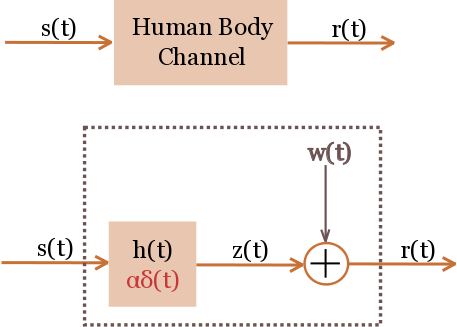It has been proven widely
and largely by a number of researchers that human body is essentially
an attenuated transmission channel. This means that this attenuated
channel could be modeled as a deterministic linear time-invariant
filter with impulse response h(t) as shown in the figure below.
In this case h(t) could
be represented as,
H(f) is the fourier transform of h(t) expressed as,
In this figure s(t) is the transmitted signal, w(t) represents additive white gaussian noise and z(t) is the convolution of s(t) with h(t).
In frequency domain, fourier transform Z(f) of z(t) is given by,
So r(t) is given by,
If

is very small then signal z(t) would be very weak as compared to noise and interference represented by w(t). This will reduce performance of the receiver and because of this reason communication distance could also not be very large between transmitter and receiver.
This derivation has been adopted from "Introduction to Digital Communications" compendium written by Göran Lindell, LTH, Lund University.




Inga kommentarer:
Skicka en kommentar